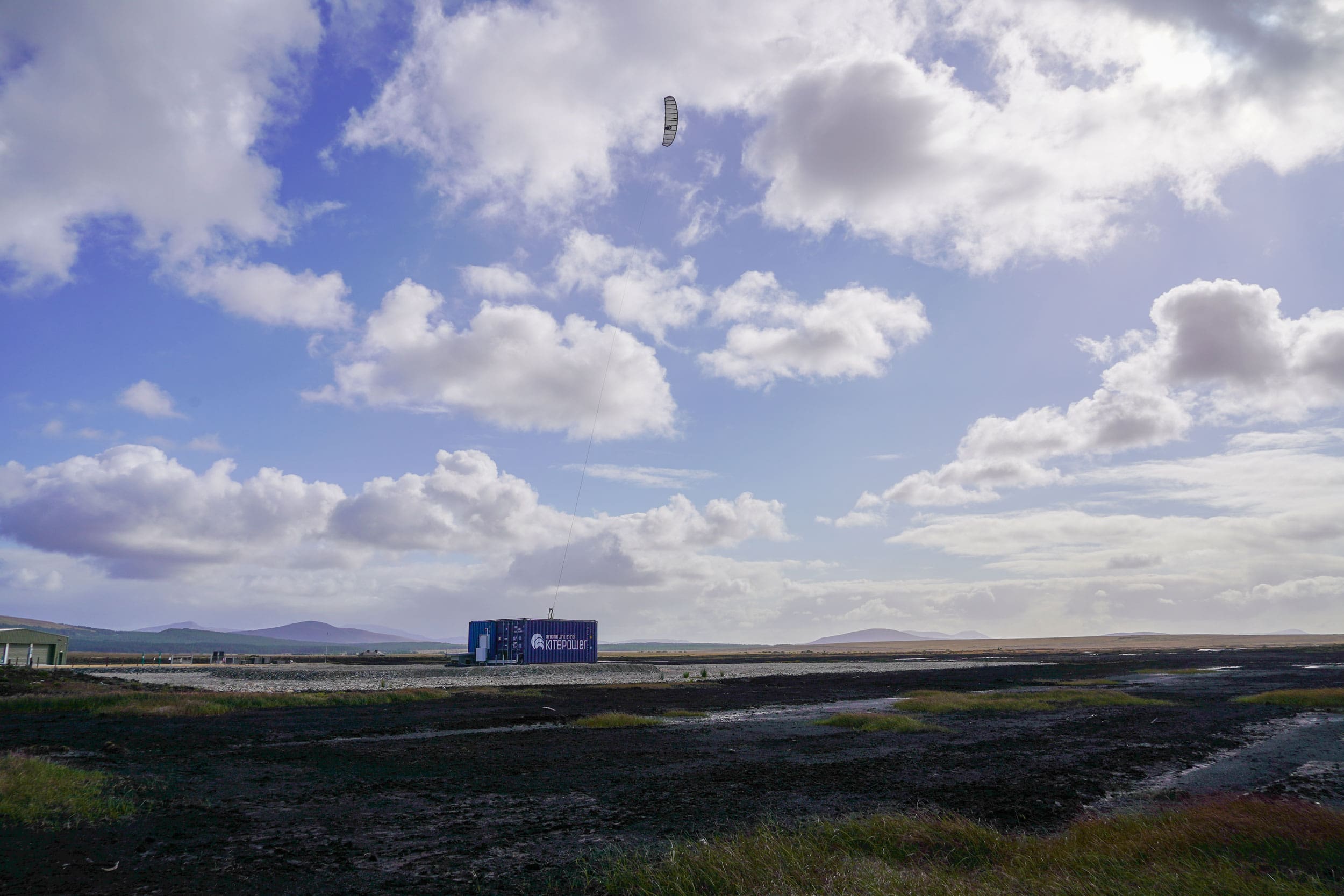Environmental Impact Assessment: Airborne wind energy unlocks new CO2 saving potentials with lowest in CO2 footprint
Life cycle assessment highlights sustainability and efficiency of Kitepower Falcon
July 16th, 2024
Delft, 16 July 2024 – Kitepower is excited to share the results of a recent life cycle assessment (LCA) of our 100 kW Falcon airborne wind energy (AWE) system. As the European Commission targets 60 GW of offshore wind energy by 2030 and 300 GW by 2050, AWE technology offers a sustainable alternative, utilising higher altitude winds with lower material demands.
A study from TU Delft, adhering to ISO 14040 and 14044 guidelines, assessed the Falcon system’s environmental impact from cradle to grave. The results are promising: the Falcon system shows a global warming potential (GWP) of 8.6 kg CO2 eq/MWh and a cumulative energy demand (CED) of 144.1 MJ/MWh. This is two times lower than traditional wind and nuclear power which settles at around 12 kg CO2 eq/MWh, almost ten times lower than solar PV with 70.2kg CO2 eq/MWh and one hundred times less than the electricity produced by diesel generators. The most significant impact stemmed from the ground station, particularly its housing, frame, and generator.
Moreover, incorporating recycling strategies could further reduce GWP and CED by 13%, highlighting the importance of sustainable practices in AWE technology.
Hybrid power plant
We also explored a hybrid power plant (HPP) configuration combining AWE, solar, and batteries, using site data from a military base in Marseille, France. This setup demonstrated the highest sustainability and the lowest levelized cost of electricity (LCoE), proving both economically and environmentally advantageous over traditional diesel generators. Moving forward, Kitepower aims to enhance accuracy with an AWE-specific database and broaden the sustainability assessment with additional impact indicators. By integrating LCA findings into a comprehensive techno-economic framework, we are committed to advancing the future of renewable energy.



